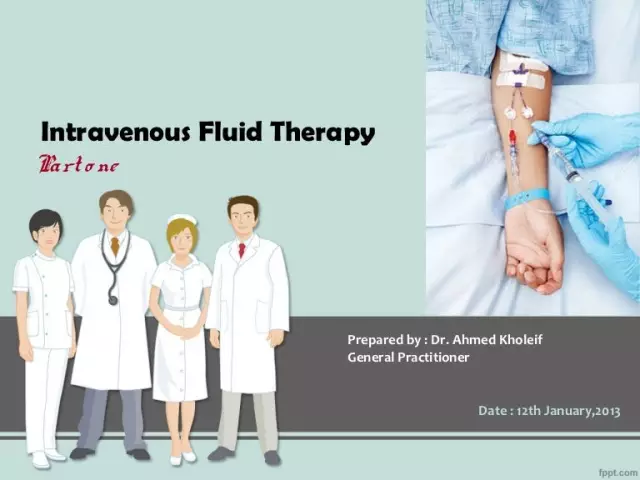- Author Rachel Wainwright [email protected].
- Public 2023-12-15 07:39.
- Last modified 2025-11-02 20:14.
Vepesides
Instructions for use:
- 1. Release form and composition
- 2. Indications for use
- 3. Contraindications
- 4. Method of application and dosage
- 5. Side effects
- 6. Special instructions
- 7. Drug interactions
- 8. Analogs
- 9. Terms and conditions of storage
- 10. Terms of dispensing from pharmacies

Vepezide is an antineoplastic herbal medicine.
Release form and composition
Dosage forms of Vepesid:
- capsules: oval, opaque, soft gelatinous, pink; the capsules contain a syrupy liquid with a slight yellowish tinge or colorless (10 or 20 pcs. in dark glass bottles, 1 bottle in a cardboard box);
- concentrate for preparation of solution for infusion: transparent, with a slight yellowish tinge or almost colorless (in vials of 5 ml).
Composition of 1 capsule:
- active substance: etoposide - 50 mg or 100 mg;
- auxiliary components: gelatin, sodium propyl hydroxybenzoate, red iron oxide, titanium dioxide, sodium ethyl hydroxybenzoate, anhydrous citric acid, glycerol, polyethylene glycol, purified water.
Composition of 1 ml of concentrate for preparation of infusion solution:
- active substance: etoposide - 20 mg;
- auxiliary components: benzyl alcohol, anhydrous citric acid, polyethylene glycol, purified polysorbate 80, anhydrous ethanol.
Indications for use
- lung cancer;
- germ cell tumors of the testicle and ovaries.
There is also evidence of the effectiveness of the use of Vepeside in the treatment of the following diseases:
- lymphogranulomatosis;
- bladder cancer;
- acute monoblastic / myeloid leukemia;
- non-Hodgkin lymphomas;
- trophoblastic tumors;
- Ewing's sarcoma;
- Kaposi's sarcoma;
- stomach cancer;
- neuroblastoma.
Contraindications
Absolute:
- acute infections;
- severe liver dysfunction;
- myelosuppression (with the number of neutrophils up to 1500 / μl and / or platelets up to 75,000 / μl);
- pregnancy and the period of breastfeeding;
- individual intolerance to the components of the drug.
Relative (diseases / conditions that require caution):
- epilepsy;
- alcoholism;
- age up to 2 years (the efficacy / safety of Vepezid use in this group of patients has not been studied).
Method of administration and dosage
The regimen of Vepezid use (route of administration, dosage regimen) is determined individually, taking into account the chemotherapy regimen used (it is necessary to take into account the myelosuppressive effect of drugs used simultaneously, as well as the effect of previous chemotherapy and radiation therapy).
Infusion solution
The solution is administered intravenously.
The daily dose of Vepesid is 50-100 mg / m 2, the time of administration is 30-60 minutes, the duration of the course is 4-5 days, the break between courses is from 3 to 4 weeks. It is also possible to use the drug according to a different scheme: 100-125 mg / m 2 every other day - on the first, third and fifth days of the course.
Before administration, a visual assessment of the solution should be carried out for discoloration or the presence of solid particles. Vepeside should be diluted in a 0.9% sodium chloride solution or 5% dextrose solution in a volume of 250 ml to a final concentration of 0.2-0.4 mg / ml. Contact with buffer aqueous solutions with a pH above 8 must not be allowed.
Capsules
Vepezide is taken orally.
Possible drug use regimens:
- daily at 50 mg / m 2 course for 21 days, repeating cycles every 28 days;
- 5 days in a row at 100-200 mg / m 2 with an interval of 3 weeks.
Repeated courses can be carried out only after normalization of peripheral blood parameters.
Side effects
- digestive system: in 30-40% of cases, the development of nausea and vomiting is observed (the violation is moderate, the cancellation of Vepesid is required in rare cases; the use of antiemetic drugs is indicated); possibly stomatitis, diarrhea, abdominal pain, dysphagia, esophagitis, anorexia; sometimes - short-term hyperbilirubinemia and an increase in the level of transaminases (in most cases, when using higher than recommended doses);
- hematopoietic system: the decrease in the number of granulocytes and leukocytes depends on the administered dose. This disorder is the main toxicity of Vepeside, which limits the dose. As a rule, the greatest decrease in the number of granulocytes is observed on the 7-14th day after the application of the drug. Thrombocytopenia is observed in more rare cases, the maximum decrease in the number of platelets is observed on the 9-16th day from the start of therapy. Typically, blood counts recover on day 20 after the standard dose is administered. The development of anemia is rare;
- cardiovascular system: in 1-2% of cases (with rapid intravenous administration) - a temporary decrease in blood pressure (restored, as a rule, when the infusion of Vepeside is stopped and fluids are administered or other supportive therapy is carried out; if it is necessary to resume therapy, the rate of administration of the solution is necessary reduce);
- central and peripheral nervous system: rarely - optic neuritis, peripheral neuropathy, fatigue, drowsiness, transient blindness of cortical genesis;
- dermatological reactions: at least 66% of cases - reversible alopecia, leading in some cases to complete hair loss; rarely - itching, pigmentation; in isolated cases - relapse of radiation dermatitis;
- allergic reactions: bronchospasm, chills, tachycardia, fever, shortness of breath, lowering blood pressure (usually observed during or immediately after administration of Vepezid's solution, stop after the end of the infusion and use of glucocorticosteroids or antihistamines); rarely - toxic epidermal necrolysis, Stevens-Johnson syndrome;
- metabolism: rarely - hyperuricemia, metabolic acidosis;
- local reactions: with intravenous administration - phlebitis; in case of contact with the skin - a pronounced local irritant effect (sometimes - to necrosis of the surrounding tissues);
- others: rarely - fever, aftertaste in the mouth, muscle cramps, interstitial pneumonitis / pulmonary fibrosis.
special instructions
Vepezide can only be used under the constant supervision of a specialist who has experience in the use of cytotoxic drugs.
Patients with hepatic / renal insufficiency should be prescribed Vepeside with caution.
The dose-limiting action of Vepeside is to suppress bone marrow function. In this regard, it is shown to regularly monitor the cellular composition of the blood before starting to use the drug, during breaks and before each next course. If chemotherapy and / or radiation therapy was carried out before the appointment of Vepeside, it is necessary to maintain a sufficient interval between these two types of treatment, which should ensure the restoration of bone marrow function. In cases of a decrease in the number of platelets to 50,000 / μl and / or the absolute number of neutrophils to 500 / μl, the drug is canceled until the blood count is fully restored.
In case of accidental extravasation, it is necessary to immediately stop the administration of Vepeside, the remaining portion is injected into another vein. In cases of a burning sensation, the administration of the solution is stopped. Around the lesion site, subcutaneous injections of hydrocortisone are carried out, and 1% hydrocortisone ointment must be applied under a dry bandage for 24 hours (until the erythema disappears).
In the course of combined therapy with other anticancer drugs, in rare cases, the development of acute leukemia (with / without a pre-leukemic phase) is observed.
The intravenous solution contains ethyl alcohol (as a filler). This applies to risk factors in children, as well as patients with liver disease, epilepsy and alcoholism.
In cases of anaphylactic reactions, the administration of the Vepezid solution is discontinued and therapy with corticosteroids and / or antihistamines is started against the background of infusion therapy.
When working with Vepesid, you must follow the rules for handling cytotoxic drugs. In cases of contact with skin / mucous membranes, the affected area should be washed immediately with soap and water.
Drug interactions
With the combined use of Vepezide with some drugs / substances, the following effects may develop:
- cisplatin: enhancement of the antitumor effect of etoposide; if cisplatin has been used previously, the elimination of etoposide may be impaired;
- live vaccines: the combination is not recommended, which is associated with the immunosuppressive effect of Vepesid and the likelihood of severe infections; vaccination is recommended 3 months after completion of treatment;
- solutions with alkaline pH values: pharmaceutical incompatibility.
It is impossible to mix Vepesid with other drugs in the same solution.
Analogs
Analogs of Vepesid are: Etoposide-Teva, Phytozide, Etoposide, Etoposide-LENS.
Terms and conditions of storage
Store at 15-25 ° C. Keep out of the reach of children.
The shelf life is 3 years.
Terms of dispensing from pharmacies
Dispensed by prescription.
Information about the drug is generalized, provided for informational purposes only and does not replace the official instructions. Self-medication is hazardous to health!






